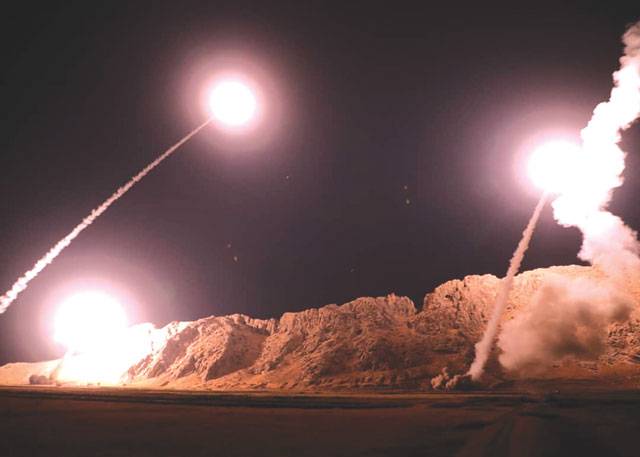TEHRAN - Iran’s Islamic Revolution Guards Corps (IRGC) announced that it has targeted the terrorists’ bases in Syria with surface-to-surface missiles on Monday morning.
“According to the immediate reports, a big number of the terrorists were killed or injured” in the attack which targeted an area in the east of the Euphrates in Syria, the IRGC website reported.
The missile attack came in response to the recent terror attack in the southwestern Iranian city of Ahvaz, in which at least 24 Iranians were killed and dozens were injured.
The pre-dawn strike by Iran, which has vowed to boost its ballistic missile capabilities despite Western concerns, targeted the area of Albu Kamal in eastern Syria near the border with Iraq.
“The headquarters of those responsible for the terrorist crime in Ahvaz was attacked a few minutes ago east of the Euphrates by several ballistic missiles fired by the aerospace branch of the Revolutionary Guards,” the Guards said on their website. “Based on preliminary reports, many takfiri terrorists and the leaders responsible for the terrorist crime in Ahvaz have been killed or wounded in this missile attack,” the Guards added. Six medium-range ballistic missiles were fired from western Iran at 2:00 am (22:30 GMT Sunday), dealing a “fatal blow 570 kilometres away,” the Guards said.
The missiles were followed by a bombing by “seven military drones” against the “mercenary terrorists”.
According to the Syrian Observatory for Human Rights, a Britain-based war monitor, “heavy explosions took place at dawn in the last pocket under IS control near Albu Kamal”.
The town of Albu Kamal itself is held by regime forces and allied regional militiamen who seized it from IS in 2017. Iran’s Fars news agency said the Zolfaghar and Qiam missiles fired had a range of 750 kilometres and 800 kilometres (465 and 500 miles), respectively.
“On at least one of the missiles was written ‘death to America’, ‘death to Israel’ and ‘death to Al Saud’,” it said, a reference to the ruling family in Saudi Arabia, Iran’s regional rival. The Guards released pictures of what appeared to be missiles lighting up the night sky, leaving trails of smoke as they soared above a desert region with a rugged mountain in the background.
Iranian President Hassan Rouhani had promised a “crushing” response to the September 22 attack by five gunmen on the military parade in Ahvaz, a mainly ethnic Arab city, while the Guards threatened “unforgettable revenge”. The missile strike “was only a jab against these criminals. The real punishment is yet to come,” General Mohsen Rezai, former commander-in-chief of the Guards and now secretary of Expediency Discernment Council, wrote on Twitter.
Iranian officials initially blamed Arab separatists backed by Gulf Arab allies of the United States for the Ahvaz attack.
But on Monday supreme leader Ayatollah Ali Khamenei appeared to link the perpetrators to militants operating in Iraq and Syria, where IS once had major strongholds.
“This cowardly act was the work of those very individuals who are rescued by the Americans whenever they are in trouble in Iraq and Syria and who are funded by the Saudis and the (United) Arab Emirates,” Khamenei was quoted by his official website as saying.
The Guards accused the United States, Israel and the “reactionary regimes” of the Middle East of supporting the “terrorists” in eastern Syria who carried out the attack, and said they always stood ready to respond to Iran’s enemies.
IS, which Iran and its Damascus allies are fighting in Syria, said all five of the Ahvaz attackers were Iranian, including four from the city.
The militants also threatened to carry out more attacks in Iran.
IS had already claimed responsibility for twin attacks in June 2017 on the parliament and the tomb of revolutionary leader Ayatollah Ruhollah Khomeini in Tehran that killed 17 people.
After that assault the Guards said they had fired missiles into Syria that had successfully hit IS targets.






